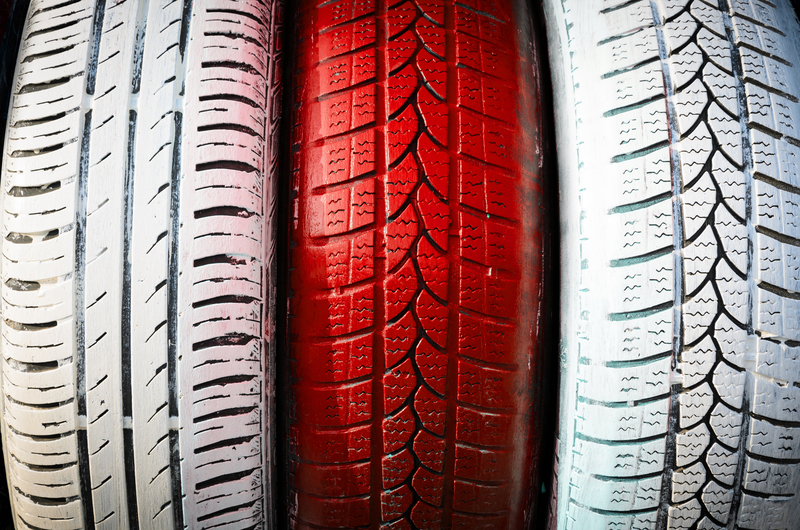Recycling Old Clothes: A Sustainable Choice
Recycling old clothes isn't just a passing trend--it's a vital step toward building a sustainable future. Every year, millions of tons of textiles find their way to landfills, creating serious environmental issues. By making smart decisions about the clothes we no longer wear, we can reduce waste, save resources, and shape a greener world.
Why Recycling Clothes Matters
The fashion industry is infamous for its environmental impact. From water usage and carbon emissions to microplastic pollution, our clothing choices have a profound effect on the planet. Recycling used garments tackles waste in landfills, conserves natural resources, and supports a circular economy in fashion.
Key Environmental Concerns
- Textile Waste: Over 92 million tons of textile waste are produced globally each year.
- Resource Usage: Manufacturing fabrics consumes vast amounts of water - for example, a single cotton shirt can require 2,700 liters of water.
- Carbon Footprint: The apparel sector accounts for 8-10% of global carbon emissions.
- Toxic Chemicals: Dyeing and treating fabrics introduce harmful chemicals into water systems.

How to Recycle Your Old Clothes
Recycling old clothing doesn't have to be complicated. Below are several methods and routes available for those looking to give their garments a second life.
Donate to Local Charities and Organizations
Donating is one of the simplest and most effective ways to extend the life of your clothing. Many local charities accept gently-used clothes and distribute them to those in need. Be sure to follow their guidelines and donate only wearable, clean items.
Use Textile Recycling Bins
More cities and retailers are now providing textile recycling bins for worn-out clothing and fabric scraps. These bins ensure the materials are sorted and processed for reuse or proper recycling.
Retailer Take-Back Programs
Numerous big-name brands offer clothing recycling programs. You can drop off old clothes--sometimes regardless of brand--for them to recycle or upcycle. Some retailers even reward you with discounts or loyalty points in exchange.
Recycling at Home: Upcycling & Repurposing
If you're creative, making use of old clothes at home is a wonderful option. Here are some ideas:
- Tote Bags: Sew shirts or jeans into reusable grocery bags.
- Cushion Covers: Turn bold-patterned garments into unique cushion cases.
- Cleaning Rags: Cut worn-out tees and towels into reusable cleaning cloths.
- Quilts: Collect fabric scraps to create a patchwork quilt.
- Pet Beds: Stuff an old pillowcase with clothing scraps to make a comfy bed for pets.
Upcycling not only diverts waste but also sparks creativity and can even become a fun family activity!
The Benefits of Recycling Old Clothes
Recycling unwanted garments comes with a range of environmental, social, and economic advantages:
Environmental Improvements
- Reduces Landfill Waste: Redirecting textiles from landfill cuts down on the space and pollution created by decomposing fabric.
- Conserves Resources: Recycling materials reduces the need for new raw resources, saving water and energy.
- Cuts Pollution: Less demand for new production means fewer dyes and chemicals polluting waterways.
Social Benefits
- Supports Charities: Your donations provide clothes to those in need and fund good causes.
- Stimulates Green Jobs: The textile recycling industry creates employment in sorting, repurposing, and selling second-hand clothing.
Economic Value
- Cost Savings: Upcycling allows you to create useful items without new purchases.
- Sparks New Markets: Demand for recycled fibers supports innovation and circular fashion businesses.
Sustainable Fashion: What Is Circular Fashion?
The concept of circular fashion goes beyond traditional recycling. It aims to keep textiles in use for as long as possible through reuse, resale, repair, and recycling. By supporting circular economy clothing, we reduce our demand for virgin materials and lessen fashion's impact on the planet.
Examples of Circular Clothing Initiatives
- Clothing Swaps: Community events where you exchange items you no longer want for something new-to-you.
- Repair Cafes: Volunteer-driven workshops teaching people how to fix and mend their clothing.
- Rental Services: Renting special-occasion outfits instead of buying for one-time use.
- Secondhand Markets: Buying pre-loved garments from thrift stores or online platforms.
Where to Recycle Old Clothes: Drop-Off Points and Programs
Finding a place to recycle your textiles has never been easier:
- Council Recycling Centers: Many municipalities have specific bins for clothes and footwear.
- High Street Retailers: Stores like H&M, Uniqlo, and The North Face often have in-store garment collection bins.
- Specialized Charities: Look for organizations focused on clothing and textiles in your region.
- Online Marketplaces: Websites and apps where you can sell, swap, or donate pre-owned fashion.
Remember: Check what condition is accepted. Some programs only want gently-used items, while others recycle textiles regardless of their condition.
Innovations in Textile Recycling Technology
Modern textile recycling isn't just about donating to charity. Advanced processes are transforming how we handle old clothes:
Mechanical Recycling
This method shreds fabrics back into fibers to be spun into new yarns. While commonly used for cotton and wool, repeated recycling may eventually degrade fiber quality.
Chemical Recycling
A revolutionary process that dissolves fabrics--like polyester--at a molecular level, allowing for high-quality new fibers. Chemical recycling can handle mixed-material garments more efficiently than mechanical methods.
Regenerative Fashion: Closing the Loop
Brands and researchers are developing bio-based materials and closed-loop systems where recycled clothes become raw materials for new products, minimizing waste generation.
Tips to Make Your Wardrobe More Sustainable
Want to reduce clothing waste at the source? Here's how:
- Buy Less, Choose Well: Invest in quality pieces that last, rather than fast fashion.
- Repair & Mend: Learn basic sewing skills to fix tears, buttons, or hems.
- Support Green Brands: Shop with companies committed to eco-friendly and ethical practices.
- Host a Swap: Trade clothes with friends or community groups to refresh your wardrobe sustainably.
- Wash with Care: Use cold water and gentle detergents to extend clothing life and reduce microplastic pollution.
Frequently Asked Questions About Clothing Recycling
Can all clothing be recycled?
*Most textiles are recyclable*, but it depends on the facilities available in your area. Items that are too worn for resale can often be processed into industrial rags, insulation, or new fibers.
What happens to recycled clothes?
High-quality donations may be sold second-hand, while lower-quality textiles are repurposed, shredded for material reuse, or processed into new products.
What should I do with damaged or stained clothes?
You can still recycle them! Textile recycling programs accept damaged, stained, or unsellable clothes--just make sure they're clean and dry.
Is clothing recycling really effective?
Yes--*every garment recycled* reduces the need for virgin materials, conserves resources, and keeps harmful waste out of landfills.

Inspirational Success Stories
Many brands and communities around the world are making a difference:
- Patagonia: Pioneers in take-back and garment repair, their Worn Wear program encourages customers to return old items for credit and resale.
- For Days: A direct-to-consumer circular fashion brand with a closed-loop membership model. Customers send back old clothes to be recycled for store credit.
- Local School Drives: Communities and schools organize clothing collection events, turning textile recycling into fundraising and social awareness opportunities.
The Future of Sustainable Fashion
As consumers become more eco-conscious, the demand for sustainable and recycled clothing options continues to rise. Fashion brands are investing in green innovation, and new business models focused on reuse and recycling are emerging at a rapid pace. Your choices truly matter--by recycling old clothes, you join a global movement toward a cleaner, healthier planet.
Take Action Today!
Wondering where to start? Go through your closet, sort items you no longer need, and choose the most sustainable option for each. Whether you donate, upcycle, or drop off at a textile recycling bin, your actions create positive change.
In conclusion, recycling old clothes is a sustainable choice with far-reaching benefits. By making thoughtful decisions about our wardrobes, we protect valuable resources, reduce landfill waste, and foster a culture of conscious consumption. The future of fashion is circular--step into it by recycling your old clothes today.